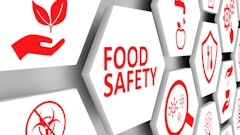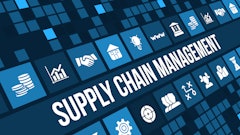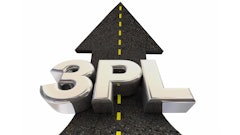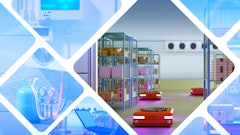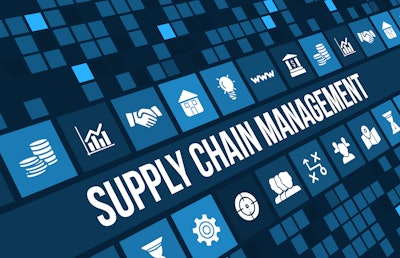
In today’s interconnected world, the journey from farm to table has become increasingly complex. For consumers, this journey carries with expectations for uncompromised safety, transparency, and efficiency. However, food ingredient supply chains face mounting challenges such as contamination, spoilage, and regulatory compliance. Leveraging advanced technologies offers promising solutions to ensure the safety and quality of food ingredients, while simultaneously improving operational efficiency.
Here’s how innovative technologies—such as Internet of Things (IoT)-enabled sensors, artificial intelligence (AI)-powered cameras, and cloud-based platforms—are transforming supply chains.
Challenges in the food ingredient supply chain
The food ingredient supply chain spans multiple stages, each vulnerable to contamination, spoilage, or mishandling. One notable risk is the mishandling of raw or undercooked ground meat products, which is a leading cause of E. coli outbreaks. Produce and raw milk also pose significant safety concerns due to inadequate sanitation, water quality issues, and temperature mismanagement.
Key challenges include:
- Temperature control. Maintaining safe temperatures for perishable goods throughout transport and storage is essential. Without proper monitoring, bacterial growth accelerates, posing safety risks and financial losses.
- Contamination risks. Contamination can occur at various points in the chain, from improper fertilization techniques to cross-contamination during handling and packaging.
- Regulatory compliance. Adhering to stringent standards, such as the FDA’s Food Safety Modernization Act (FSMA), requires sophisticated systems for tracking, monitoring, and reporting.
Regulatory frameworks: FSMA vs. HACCP
A robust regulatory framework underpins food safety initiatives, with Food Safety Modernization Act (FSMA) and Hazard Analysis and Critical Control Points (HACCP) serving as key pillars. While both systems aim to prevent hazards, their approaches differ significantly.
HACCP focuses on identifying Critical Control Points (CCPs)—specific points in the production process where control measures are essential to prevent food safety hazards. For example, CCPs might include pasteurization to eliminate pathogens in milk or maintaining proper cooking temperatures to kill harmful bacteria in meat.
FSMA, on the other hand, adopts a broader perspective with preventive controls that address potential hazards at multiple stages of the supply chain. These controls include measures beyond CCPs, such as supplier verification, environmental monitoring, and allergen management. Unlike HACCP, FSMA emphasizes proactive risk management by requiring businesses to document and implement comprehensive food safety plans.
The “farm-to-fork” approach integrates both methodologies to create a seamless food safety system. For instance, farms adhering to HACCP may focus on irrigation water quality as a CCP, while FSMA-compliant facilities handling the same produce implement preventive controls like sanitation and traceability to address cross-contamination risks.
Technological innovations addressing supply chain challenges
To address these challenges, businesses are turning to technology. Modern tools not only streamline processes but also provide robust safeguards against contamination and inefficiency.
1. Automated temperature tracking
Temperature control is critical for food safety, particularly for perishable items like ground meat and fresh produce. IoT-enabled sensors now monitor and report real-time temperature conditions within storage facilities, trucks, and shipping containers.
For instance, a major distributor implemented IoT-based temperature tracking and reduced spoilage by 25%. The system provided real-time alerts when conditions deviated from optimal ranges, allowing for immediate corrective action. Such proactive measures ensure that ingredients remain safe and maintain their quality throughout the supply chain.
2. AI-powered cameras
AI-powered cameras are revolutionizing quality control. These systems inspect food ingredients for spoilage, damage, or contamination during transport and storage. Using high-resolution imaging, AI algorithms can detect foreign particles, compromised packaging, or visual signs of bacterial contamination that might escape human inspectors.
In one example, a food manufacturer avoided a costly recall by deploying AI systems to identify contaminated ingredients early in the production process. These cameras provide a critical layer of protection, ensuring that only safe and high-quality ingredients move forward.
3. Cloud-based monitoring systems
Cloud platforms consolidate data from IoT sensors, AI cameras, and other devices, centralizing information in real time. This empowers supply chain managers to make informed decisions quickly.
Moreover, these platforms incorporate data analytics to identify patterns, such as recurring temperature fluctuations or equipment failures. By addressing these issues proactively, businesses can prevent spoilage, optimize operations, and reduce costs.
Best practices for enhancing food safety
Beyond technological adoption, robust food safety practices are crucial. These include:
- Composting and fertilization control. Properly composted manure minimizes the risk of contaminating produce with harmful bacteria like E. coli.
- Water quality management. Using potable water for irrigation and cleaning reduces contamination risks. Regular testing and maintenance of water supply equipment are essential.
- Enhanced sanitation protocols. Regular cleaning and disinfecting of equipment, tools, and surfaces prevent cross-contamination. Employing external sanitation services can add an additional layer of verification.
- Worker hygiene and training. Employee hygiene practices, such as regular handwashing and proper use of protective gear, must be emphasized through ongoing training. Daily checks, such as hand swabs, can ensure compliance.
- Centralized produce washing. Washing produce in a centralized facility reduces contamination risks compared to decentralized handling.
Advanced solutions for modern supply chains
1. IoT sensors for real-time monitoring. IoT devices track not only temperature but also humidity and other environmental factors, ensuring optimal storage and transport conditions.
2. Blockchain for traceability. Blockchain technology enhances transparency by providing a secure, immutable record of a product's journey from source to consumer. Some companies are already leverage blockchain to track food origins and isolate contaminated batches during outbreaks swiftly.
3. Rapid testing systems. Advanced systems, including AI-powered detection and ATP bioluminescence technology, enable rapid identification of contaminants like E. coli before processing. Large-scale organizations often employ DNA-based testing for high-risk ingredients to ensure compliance and safety.
4. Cold chain management. Maintaining a consistent cold chain during transportation and storage is critical for perishable goods. Automated temperature tracking from point of loading to delivery ensures compliance with safety standards and reduces spoilage.
Educating consumers: A key component
Food safety doesn’t end at the supply chain; consumers play a vital role in preventing contamination. Companies can contribute through corporate social responsibility (CSR) initiatives that educate consumers about:
- Proper cooking techniques to eliminate harmful bacteria (e.g., cooking ground beef to 71°C/160°F).
- Correct storage practices, such as refrigerating perishable items promptly.
- Avoiding cross-contamination during meal preparation.
By empowering consumers with knowledge, businesses help ensure safety at the final stage of the food journey.
Future trends and conclusion
The future of food ingredient supply chains is bright, driven by emerging technologies such as predictive analytics and blockchain. Predictive analytics, powered by AI, can anticipate disruptions, enabling companies to address potential issues proactively. Blockchain, meanwhile, strengthens consumer trust by offering unparalleled transparency.
Technology is already reshaping the food supply chain landscape, making it safer, more efficient, and more transparent. Automated temperature tracking, AI-powered cameras, and cloud-based systems are reducing spoilage, enhancing quality control, and ensuring compliance. However, the journey doesn’t end with technology; implementing strong food safety practices and educating consumers remain essential.
Looking ahead, the integration of cutting-edge solutions will continue to elevate standards across the industry, ensuring a sustainable and secure food system for businesses and consumers alike.

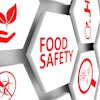
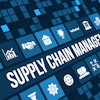


![Top Tech Logo Vertical [color]](https://img.foodlogistics.com/files/base/acbm/scn/image/2024/11/top_tech_logo_Vertical__color_.672d2a7c2733d.png?auto=format%2Ccompress&bg=fff&fill-color=fff&fit=fill&h=167&q=70&w=250)



